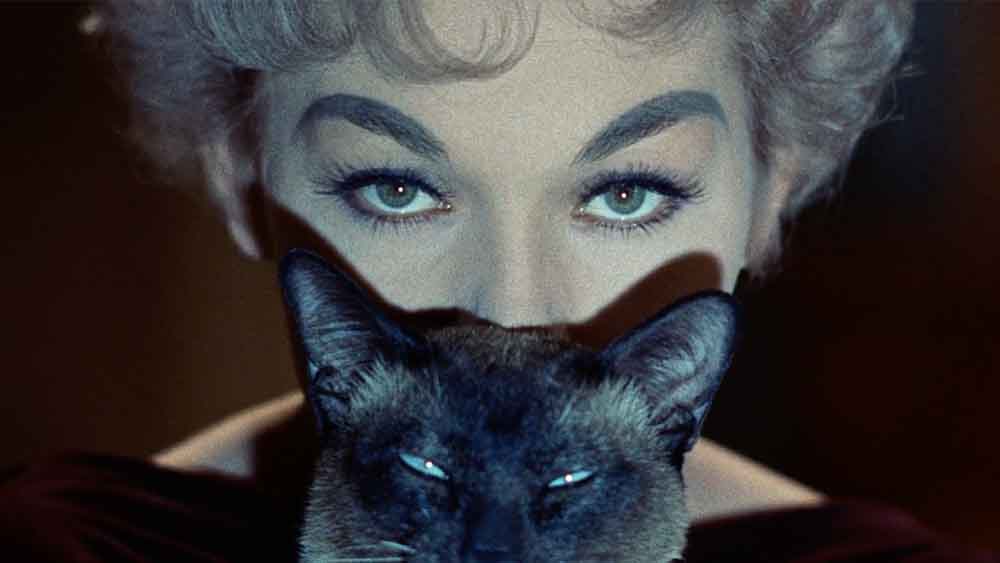I got back into movies this month, mainly watching classic-era stuff. I also started dipping into spooky season early.
I didn't mean to do this, but I watched three movies starring each of Gary Cooper, Barbara Stanwyck, Rex Harrison, Myrna Loy, and Fredric March (who I had never heard of). Strange how those things happen.
2025 Movies
One Battle After Another is a tour de force. It's thrilling, dark, and funny. It's hard to look away from its electric performances and cinematography. Paul Thomas Anderson hit this one out of the park.
They'll probably find a way to keep making movies based on this IP, even though they called this one Downton Abbey: The Grand Finale. It was sweet to return to this world; like visiting with old friends you've lost touch with. Noël Coward is a character in the movie, and I had never heard of him. Then it turned out that I watched two of his movies this month: Design for Living and Blithe Spirit. Another strange coincidence.
Witchy Romance and Comedy
I Married a Witch is quirky, mischievous fun. Veronica Lake stars as a revenge-seeking witch who, despite her schemes, and perhaps because of them, is impossible to dislike. Great special effects and costumes, romantic, fun, funny. I was delighted and I definitely recommend it.
Bell, Book and Candle has a lot in common with the above film. Both are comedies featuring a sorceress seducing a hapless guy for revenge, or is it for love? But it's also quite its own movie. It plays notes on a lower register and in different concert hall. A beatnik speakeasy, to be exact. Kim Novak's witch, Gillian is not some old world sorcerer, but a sexy Greenwich Village witch with style to match. Her wardrobe is sumptuous. As are the late 50s colors and James Wong Howe's cinematography. Pair it with Vertigo, released the same year and also starring Novak and Jimmy Stewart.
Love Triangle but with Ghosts
Blithe Spirit has Rex Harrison haunted by his predeceased wife. Inconvenient timing as he's now ready to remarry. The production value is midling, and its neither very romantic nor very funny, but it's an unserious time, if you're in need of one.
In The Ghost and Mrs. Muir, Rex Harrison's at it again, except this time he's the ghost. How does he keep getting mixed up in these things? Gene Tierney plays a young widow and mother who moves into the old house of Harrison's deceased sea captain and, tale as old as time, what starts out as a light haunting turns into a supernatural romance. My favorite thing about this one is Bernard Herrmann's lush score.
Telephonic Terror
I think I'd seen them—or bits and pieces of these movies in my youth, and ever since then I've conflated them. I decided to watch both so I could disentangle them.
In Sorry, Wrong Number (1948), Barbara Stanwyck plays a difficult and bedridden woman who overhears a haunting phone call between two other people which sets a mystery plot into motion. As an audience we're as confined as Stanwyck's character; most of the film takes place at her bedside where she experiences a series of upsetting phone calls, and we writhe in agony, not with her, but because of her. The movie wants to put us in this position, and it's brilliant, but it's also a relief when it's through!
Midnight Lace is a 1960 Hitchockian thriller starring Doris Day. What I remembered most from this one is the strange voice that terrorizes Day's character. I think this movie is great fun, but I remembered the ending, and that spoiled the fun a bit for me.
Both films sow doubt about whether or not the threats to their lead women's lives are real or imagined, which plays into certain unsavory notions of gender. The men don't fare well either though.
Alfred Hitchcock
Can't keep me away from Hitchcock's filmography. This time I watched works from his early, British period.
The Lodger is a 1927 silent film set during the historical London Fog, but Hitch only seems to use the event for ambiance. The real focus is on the mystery of an apparent serial killer, and a romance involving its prime suspect. Even early on, Hitchcok's style and prowess for suspense impress.
The Man Who Knew Too Much (1934) was Hitchcock's first film by this title. He made a similar, and perhaps better known film in 1956 starring Jimmy Stewart and Doris Day. This earlier version stars the charismatic Peter Lorre and builds to a thrilling, and action-packed climax.
Gary Cooper and Barbara Stanwyck
Meet John Doe is a Frank Capra picture starring Gary Cooper and Barbara Stanwyck. What I'm learning about Capra is that his films center around community. His are idealistic feel-good movies. Cooper's hapless tramp, and Stanwyck's worldly-wise journalist are perfect foils with which to render his message of hope.
Ball of Fire, directed by Howard Hawks, with a writing credit for Billy Wilder, also stars Cooper and Stanwyck. Both were released in 1941. Cooper and Stanwyck's roles have a familiar ring too; his naiveté contrasts her shrewdness. This one's good, silly fun.
Hollywood Classics
Sullivan's Travels presents a self-aware Hollywood contrasted with its earnest protagonist, a film writer played by Joel McCrea. He's good in it, but I'd have preferred a bit more Veronica Lake.
The Best Years of Our Lives is a 1946 drama about the fraught homecoming of three American servicemen. It's deliberately paced with wonderful performances from an incredible cast. If anything, I think it could have been longer. I think it's missing a scene or two to make complete the suffering and fate of some characters. That said, this film is easy to recommend.
Cary Grant and Myrna Loy are adorable in Mr. Blandings Builds His Dream House, a 1948 comedy which shows us just how annoying it can be to try to mitigate a few annoyances. Somehow, when life's frustrations are experienced firsthand they're terrible, but when channeled through Cary Grant they're hilarious.
What Ever Happened to Baby Jane? is a 1962 psychological thriller/horror starring Bette Davis and Joan Crawford as embattled sisters and aging former movie stars. My favorite thing about this film is Bette Davis' creepy performance as the cruel and delusional Jane Hudson. My main critique is that it could have been better edited. Scenes should have been more economical and fringe characters could have been cut. And there were so many squandered opportunities to create suspense. I'm being tough on this film because it has so much going for it, but it falls short of its potential.
Design for Living is a racy 1933 romantic comedy puts into stark contrast the moralizing censorship of the Hayes Code era. And that ending certainly raises some questions!


